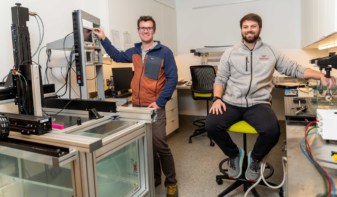
The first and largest study of focal high-intensity focused ultrasound (HIFU) ablation as a primary treatment for prostate cancer in the United States showed that HIFU provides an effective alternative to surgery or radiotherapy. Mirroring previous research conducted in Europe, the study of 100 men revealed encouraging outcomes and shortened patients’ recovery times.
Focal HIFU ablation uses a focused ultrasound beam to raise the temperature inside the prostate to approximately 90°C to destroy targeted areas of prostate tissue. HIFU hemigland ablation, which treats targeted and known areas of prostate cancer, has been used successfully worldwide, with few of the debilitating urinary and sexual side-effects associated with standard treatments such as whole-gland radical prostatectomy and radical radiotherapy.
HIFU was approved for prostatic tissue ablation by the US Food and Drug Administration in 2015. Following this, the Keck School of Medicine of the University of Southern California offered it as a primary treatment for localized prostate cancer and launched the study to assess men who underwent a HIFU procedure for prostate cancer between 2015 and 2019.
The patients, ranging in age from 59 to 70, had very low (8%), low (20%), intermediate favourable (50%), intermediate unfavourable (17%) and high (5%) risk prostate cancer. Only 13 of these experienced minor complications after hemigland HIFU, such as difficulties with urination and urinary tract infection. No patients had major complications. Half of the patients completed quality-of-life questionnaires and reported improved urinary symptoms with no significant decrease in sexual potency. None experienced urinary incontinence.
Writing in the Journal of Urology, first author Andre Abreu, of USC Urology, and colleagues report that in a median of 20 months of follow-up, 73% of the patients did not experience treatment failure, defined as clinically significant cancer recurrence, metastases or mortality, or the need for additional hormone therapy, chemotherapy, radiotherapy or surgery. Bilateral prostate cancer at the time of diagnosis was the sole predictor for recurrence. Ninety percent of patients did not require repeat focal HIFU, and 91% did not need any type of radical (whole-gland) treatment within the study timeframe.

Sonablate HIFU treats prostate cancer, minimizes side effects
The researchers also emphasize the importance of mandatory follow-up biopsies. This recommendation is based on data showing that multiparametric MRI has a sensitivity of only 44% for detecting clinically significant prostate cancer, despite it being the preferred imaging modality for follow-up after partial gland ablation.
“Focal HIFU ablation is safe and provides excellent potency and continence preservation with adequate short-term cancer control,” Abreu tells Physics World. “This study provides the initial US HIFU data to prostate cancer stakeholders, including clinicians and patients. We hope these positive data encourage urologists to offer focal HIFU ablation to effectively address prostate cancer without the intrinsic side-effects of radical treatments. Physicians should discuss in detail with their patients about all potential treatment options for prostate cancer, to ensure that they receive personalized care that addresses patients’ individual needs according to the disease they have.”



